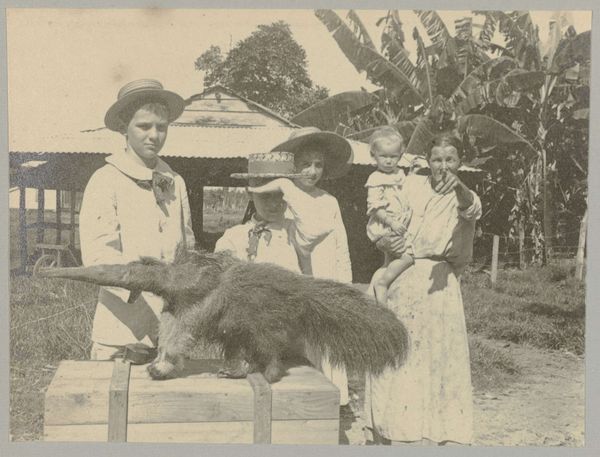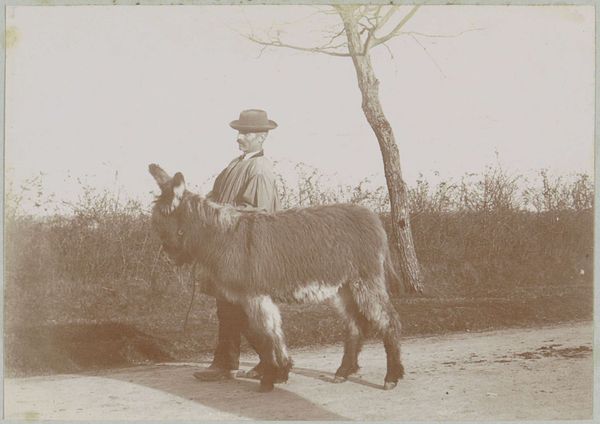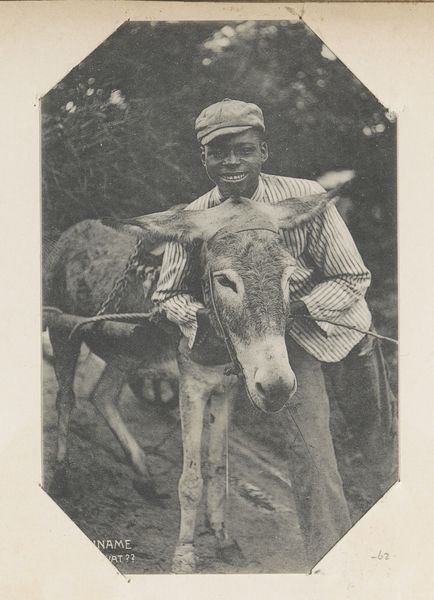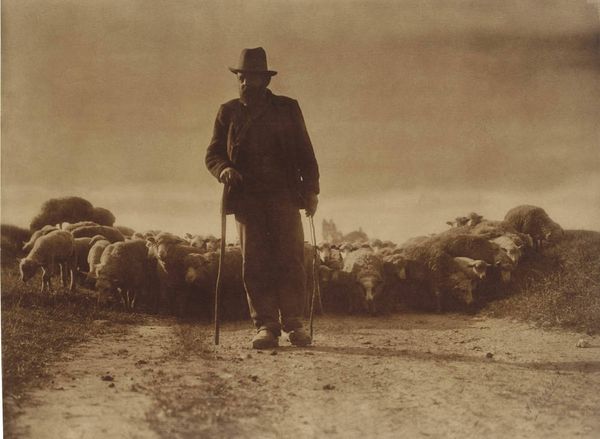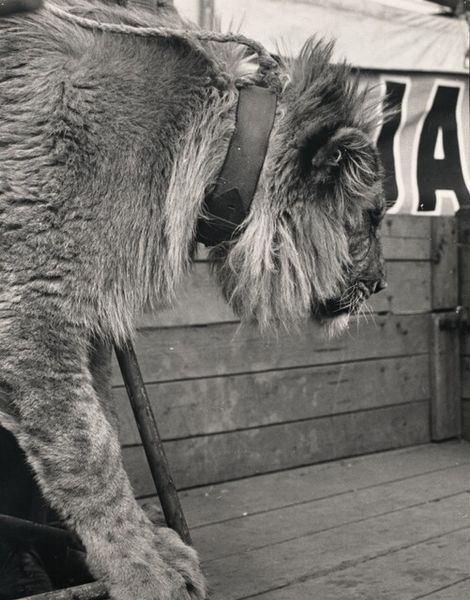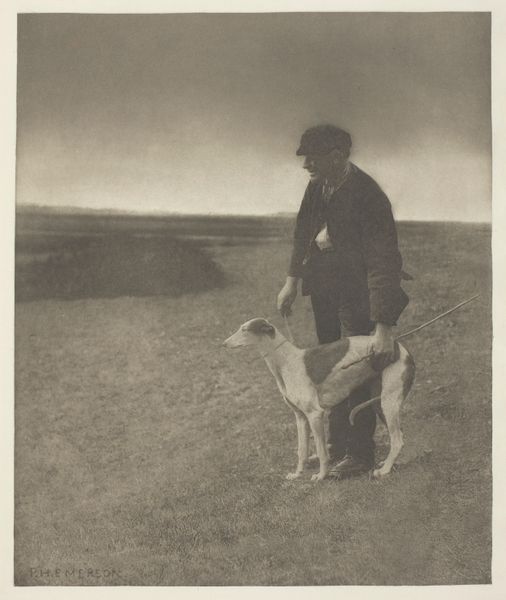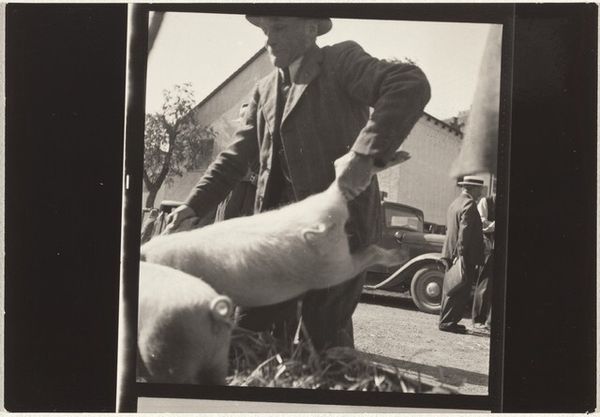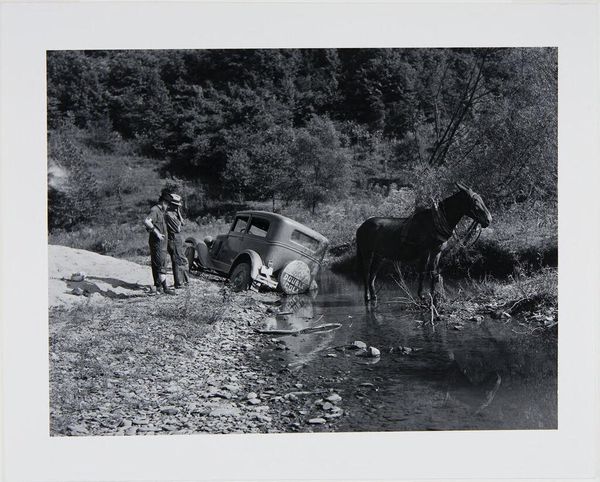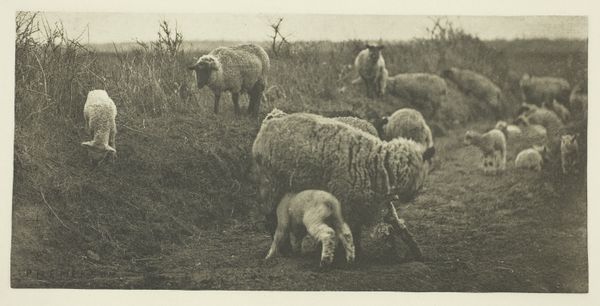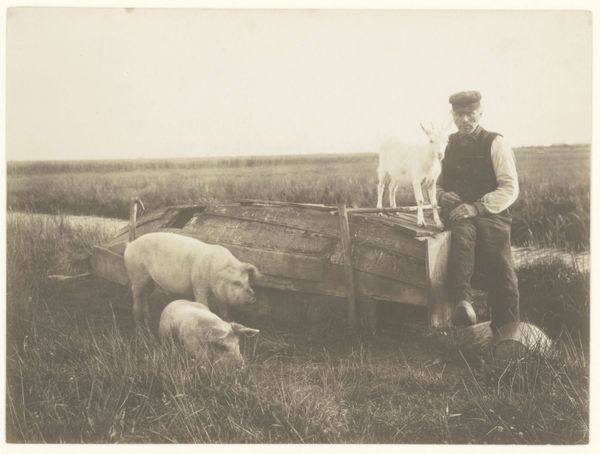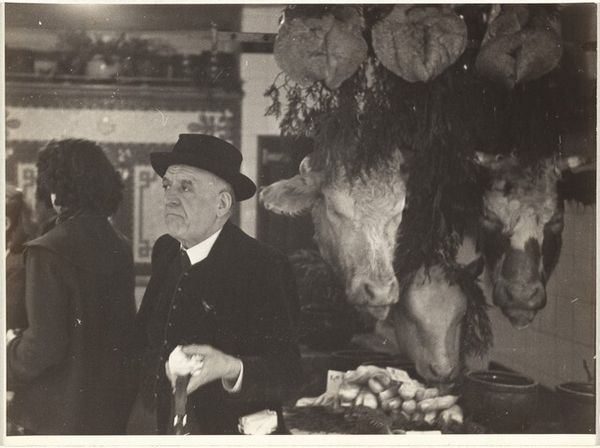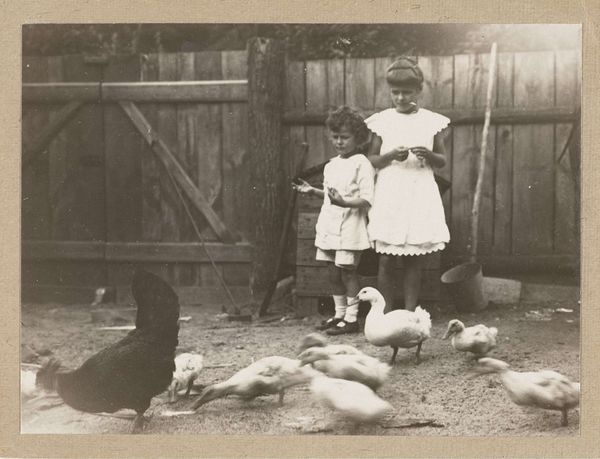
Patrick Flanagan on Tubber Green, County Galway, Ireland after 1954
0:00
0:00
photography, gelatin-silver-print
#
portrait
#
landscape
#
photography
#
black and white
#
gelatin-silver-print
#
monochrome photography
#
genre-painting
#
monochrome
#
realism
Dimensions: image/sheet: 30.7 × 28.4 cm (12 1/16 × 11 3/16 in.)
Copyright: National Gallery of Art: CC0 1.0
Curator: This arresting image is Dorothea Lange's "Patrick Flanagan on Tubber Green, County Galway, Ireland," taken sometime after 1954. The gelatin silver print captures a moment seemingly bursting with rural vitality. Editor: It certainly makes an impression! The immediate sensation is a potent mix of…I’m not quite sure. Jovial? Earthy? The grizzled man’s grin seems at odds with the somewhat grim cargo he carries: two limp lambs. Curator: Yes, there's a visual discordance at play. Note how Lange positions Flanagan centrally. His figure divides the composition between the relative clarity in the foreground, featuring our subject, and the diffused scene filled with blurred bodies of people and livestock towards the background, forming an area in much lower focus.. Editor: Agreed. That positioning elevates him –literally and figuratively– above the crowd, yet he's intrinsically connected to the pastoral setting that makes him look like an icon from times of precarity that contrast to our late-stage global capitalism. The lighting amplifies this—dark wool and worn tweed set against…what, really? Optimism? Defiance? Curator: The tonal range certainly directs our reading. Consider the use of black and white – a very intentional artistic choice in that it removes any seductive, superfluous information and concentrates our perception on pure visual language. Texture becomes paramount: the rough fabric, the wool…Lange meticulously details those surfaces to further accentuate contrast across the pictorial field. Editor: But let’s not forget the larger socio-economic currents coursing through Lange’s oeuvre, visible also here. Born and raised in industrial U.S. East Coast, what perspective does that create when one travels across the ocean to picture people and agriculture? I wonder what Lange and the photographed farmers communicated, and how. Is it collaborative, exploitative, an equal artistic exchange, or something else entirely? Curator: Your concern speaks to representation – and, to a degree, it invites questioning beyond Lange’s conscious visual decision-making. It prompts considerations that run laterally to her choices in formal rendering. We can return again to Flanagan’s face, as the geometry it traces is in conversation with every element surrounding him; we cannot detach the signifier from what is signified. Editor: I concur, and in that respect this single artwork encapsulates such tensions perfectly. Thank you for your elucidating perspective on how to perceive it anew. Curator: The pleasure was mine; I hope it provides listeners with an alternative interpretation regarding modes of seeing.
Comments
No comments
Be the first to comment and join the conversation on the ultimate creative platform.
